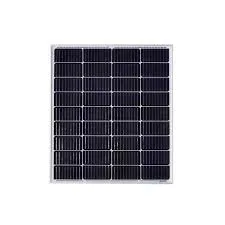Understanding the Performance Metrics of Standard Solar Panels and Their Efficiency Ratings for Optimal Use
Understanding Standard Solar Panel Efficiency
Solar energy has become a cornerstone of the modern sustainable energy landscape, with solar panels converting sunlight into electricity. A crucial aspect of this technology is solar panel efficiency, which refers to the amount of sunlight that a solar panel can convert into usable electricity. As the world shifts towards renewable sources of energy in the face of climate change, understanding solar panel efficiency is essential for both consumers and producers alike.
The efficiency of a solar panel is typically expressed as a percentage, representing how effectively it converts solar irradiation into energy. For example, a solar panel with an efficiency of 20% converts one-fifth of the sunlight it receives into electricity. Standard silicon-based solar panels, which dominate the market today, generally exhibit efficiencies ranging from 15% to 22%. However, advancements in technology continue to push these boundaries, with some leading-edge panels reaching efficiencies above 23%.
Understanding Standard Solar Panel Efficiency
Another important factor is the design of the solar cell itself. Innovations such as bifacial design, which captures sunlight from both sides of the panel, and half-cut cell technology, which minimizes power loss, have shown to enhance efficiencies. Additionally, the coating materials and surface textures can impact how much sunlight is absorbed versus reflected.
standard solar panel efficiency

Moreover, environmental conditions can significantly affect solar panel performance. Temperature and sunlight intensity are crucial aspects; solar panels operate most efficiently under cooler conditions. If temperatures exceed optimal levels, efficiency can drop. This means that choosing the appropriate location for installation, where sunlight exposure is maximized, can lead to better energy output.
Understanding the implications of solar panel efficiency is not only valuable for potential buyers but also for policymakers and businesses. Higher efficiency panels can produce more energy in the same amount of space, making them particularly appealing in urban areas where rooftop space is limited. Additionally, investing in higher-efficiency panels can lead to longer-term savings on energy bills, paving the way for greater adoption of solar technology.
As we look to the future, the research and development of solar technology remain critical. Emerging technologies such as perovskite solar cells and tandem cells, which combine different materials to improve energy conversion rates, show immense promise. These innovations could revolutionize the industry by offering even higher efficiencies and potentially lowering the costs associated with solar energy.
In conclusion, solar panel efficiency is a vital component of the renewable energy equation. It influences consumer choices, affects the viability of solar projects, and impacts the broader goal of transitioning to sustainable energy sources. As technology continues to evolve and improve, the efficiency of solar panels will likely increase, making solar energy an even more viable alternative to fossil fuels. This progress toward enhanced solar panel efficiency not only supports energy independence but also contributes significantly to reducing greenhouse gas emissions, fostering a healthier planet for future generations.
-
Unlocking Energy Freedom with the Off Grid Solar InverterNewsJun.06,2025
-
Unlock More Solar Power with a High-Efficiency Bifacial Solar PanelNewsJun.06,2025
-
Power Your Future with High-Efficiency Monocrystalline Solar PanelsNewsJun.06,2025
-
Next-Gen Solar Power Starts with Micro Solar InvertersNewsJun.06,2025
-
Harnessing Peak Efficiency with the On Grid Solar InverterNewsJun.06,2025
-
Discover Unmatched Efficiency with the Latest String Solar InverterNewsJun.06,2025







